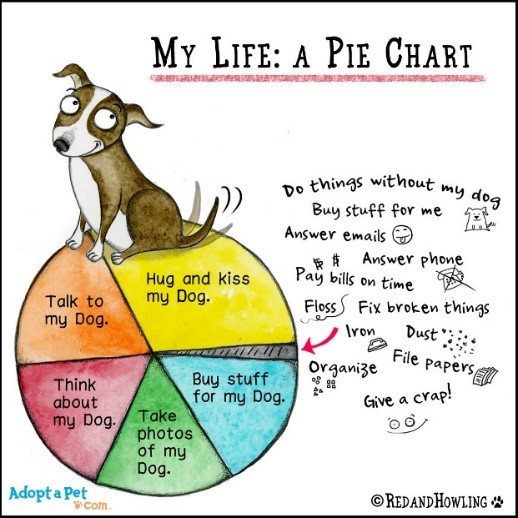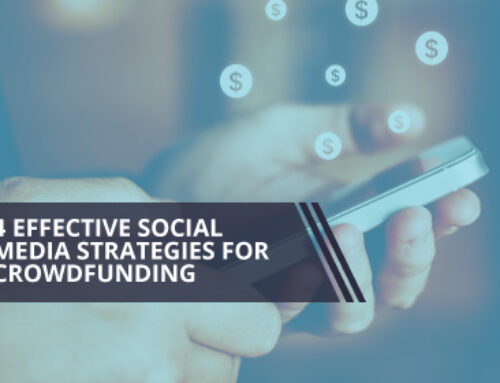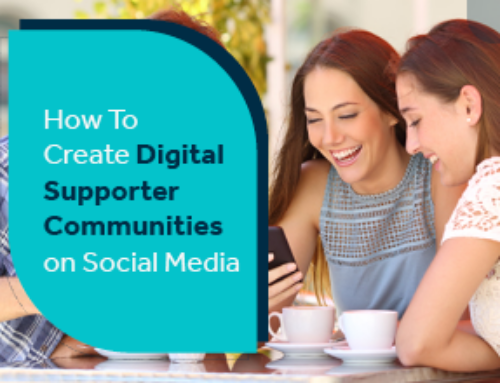
Using social media for fundraising isn’t a new strategy.
Almost everyone is on Facebook. And most nonprofits use Facebook for fundraising, especially around the holidays.
But social media is only a tool. It’s not an ATM. And like any tool, you have to know how to use it.
Simply showing up occasionally on Facebook and asking for money doesn’t cut it. People don’t give just because you need funds.
You need to create a social media plan and strategy that uses the right platforms in the right way to make the right Asks to the right audiences.
Make sense?
Fundraising is all about building relationships and social media is just one tool to help you do that.
Let’s start by looking at the various social media platforms and the ones you should probably be on.
Which Social Media Platforms Should You Be On?
There are dozens of social media platforms where you and your nonprofit can be.
But it doesn’t make sense to try to maintain accounts everywhere.
You should only be on the social media platforms where your audiences are hanging out.
That means you need to be clear about who your best donors are and where you can find them. Same with volunteers and program participants.
In short, you don’t need to be on a platform just because everyone else is. You need to be there because it makes sense for your nonprofit.
Having said that, let’s look at some of the most common ones where you can probably find your audience.
These are the main platforms for nonprofits right now. Others will surely emerge, and perhaps some of these will fade away. Through your social media strategy, you can maximize these tools for the best result.
Social Media Strategy: Making it All Work For You
Once you decide which platforms make sense for your organization, develop a strategy so you can build your audiences and count on their support when you use social media for fundraising.
That means creating goals for each social media platform you use, deciding how often you’ll post (probably more than you’re posting now), and having a mix of evergreen posts and in-the-moment posts so you can update your followers about news as it happens.
Being strategic will help you avoid the most common mistake nonprofits make and that’s constantly pushing information out about how people can help. Donate! Adopt! Shop our Amazon Wish List! Look if that’s all you do, you’ll wear people out.
You need to think about how to engage people so they LIKE seeing your posts and make a point to visit your page if they don’t see something in their news feed. Here’s a great example of a post meant to engage:

If you’re like most, the biggest issue with getting all this done is time.
With so many platforms, where do you find the time to be everywhere? If you’re a small organization, you can’t be everywhere.
It’s much better to have a presence on a smaller number of platforms and do that really well than have social media accounts that are digital ghost towns.
Start with the two or three platforms most likely to yield results and wait to add others until you find your groove with the ones you have.
Take the time to properly set up each account, choose the best handle, and learn about tools for nonprofits, especially those aimed at social media for fundraising. Learn about analytics so you can track your progress.
Then, build time into your workday to water your social media garden. Plan to spend an hour or so a day (at least as you’re building your plan) nurturing your social media accounts, including creating and posting content and engaging with your supporters’ content. Later you can recruit help so all the work isn’t on your shoulders.
You also need to respond to questions asked via direct messages. There’s nothing worse than having people try to message your Facebook page and getting no response.
Here are some more tips for managing your channels:
- Delegate social media tasks when possible. You shouldn’t turn the reins of social media over to an intern or volunteer, but you can enlist people to take on particular tasks.For example, give your intern some photos of your organization at work, photos where you have permission from everyone to share on social media, and task the intern with sizing the photos for each platform, researching hashtags, and determining whom to tag.
- Work with your intern and other staff members to think about how to adapt any photo or short video you have for each platform. For example, if you have a photo of volunteers planting trees or tutoring children or stocking the shelves of a pantry or doing whatever your organization does, figure out how best to showcase that photo on Facebook, Instagram, Twitter, and LinkedIn.
On Facebook, you might write something short about volunteers being the lifeblood of your organization and thank all your volunteers for their support.
On Twitter, you might connect the volunteers to the cause area: We cannot fix homelessness in a city with so little affordable housing, but we can provide a meal and referrals to medical, dental, and mental health services. On Instagram, you might share just the photo without any text. Then choose appropriate hashtags and put them in the comments.
On LinkedIn, you might write something about how your organization utilizes volunteers, and how important it is that people take time out of their busy professional lives to volunteer.
One photo, four social media posts!
- Keep it short with words. When people go to their favorite social platforms, they scroll. Don’t expect anyone to read a long passage. If you need more words, write a blog post for your website and link to it on Facebook, Twitter, and LinkedIn.
- Educate people about your area of emphasis. If you operate a food pantry, create graphics or infographics that teach people about food insecurity. If you work in animal rescue, share statistics that will bring the problem home. A social media graphic with a single compelling statistic works well on Instagram, Facebook, Twitter, and LinkedIn.

- Use a social media scheduler such as Buffer to ensure a steady stream of content gets posted to your channels even when you’re super busy. This is another task you can delegate to an intern or staff.
Getting a handle on social media is no small task. Don’t beat yourself up if a channel goes unattended for a couple of weeks. It happens.
Building a social media following takes time, hard work, and patience. And all the while you’re trying to run your programs, steward your donors, and do all the things you have to do to keep a nonprofit humming. It’s a lot.
Just keep at it. Keep posting content and see what your audience responds to. Your hard work will pay off in time!
Making the Most of Your Social Media Channels
Now that you have your channels up and running, you can focus on how to use your social media for fundraising.
There are definitely tricks to it all especially when each platform makes changes/improvements nearly every week.
Pay particular attention to fundraising on Facebook since that’s where you’re like to reach most of your audience.
Here’s a rough formula you can follow to roll out your social media fundraising campaign:
Fundraising on social media is a long game, and it feels amazing when it finally pays off with a successful campaign. Be consistent in working your social media accounts, and you will succeed in growing your audience and raising more money.
Analyzing Results on Your Social Media Platforms
A huge benefit of social media is the ability to see your metrics in black and white.
But many of us do not use this wonder of technology. First off, we don’t take the time to figure out how. But, also, in many cases we don’t want to know!
We know how many likes and shares our posts get, and we choose not to dig deeper. It’s hard to view your popularity in such cut-and-dried terms.
But taking a hard look at your analytics can inform your social media moving forward.
You can get a more accurate picture of what works and what doesn’t and see trends in audience growth. You can see which time of day and day of the week is best for posting, and you can see how videos perform compared to photos and graphics.
Your scheduler can provide analytics in a way that makes them easy to understand. This is a task an intern, staff person, Board member, or volunteer can do. Their impartiality might make it easier for them to make recommendations.
Also consider what you’re measuring and why. Tracking the number of followers you have on a platform is a good start, but how many are engaging? How many are converting to donors or volunteers? Think carefully about what you want to measure and why. This will get you started:
| Awareness | Impressions, views (how many people SAW your post?) |
| Growth | Followers, likes, subscribers (how many people want to CONTINUE seeing your posts?) |
| Engagement | Reactions, clicks, comments, shares (how many people care enough to RESPOND to your post?) |
| Conversions | Event registrations, donations, signups (how many people want to HELP you?) |
Finally, remember that it doesn’t matter how many fans or followers or connections you have if they aren’t doing something. Don’t worry about getting 5,000 people on your Facebook page. Worry about getting the 1,000 you have now to engage with you.
The more someone cares about what you’re posting, the more likely they are to take action — and that’s ultimately what you want.
The Bottom Line

Social media is a beast of a marketing and fundraising strategy. If you’re not careful, it can take over your life, and it may have already taken over!
By focusing on social media for fundraising you can create social media routines that deliver results for your organization. You aren’t on social to be popular, and you aren’t on social media to show that you know how to be on social media. You are on social media to grow your audience and raise money.
As you build your audience and get comfortable asking for money on social media, you will grow your donor base, raise more money, and change more lives. And that’s what it’s all about!

 Instagram: Like TikTok, Instagram offers the opportunity to connect with younger supporters, people who believe in your cause area and want to engage but might not engage with a nonprofit through a traditional appeal. The app has about one billion monthly users.
Instagram: Like TikTok, Instagram offers the opportunity to connect with younger supporters, people who believe in your cause area and want to engage but might not engage with a nonprofit through a traditional appeal. The app has about one billion monthly users. When you plan your fundraising campaigns, think about how you can make the most of your social media platforms.
When you plan your fundraising campaigns, think about how you can make the most of your social media platforms.



That is really attention-grabbing, You are a very professional blogger.
I’ve joined your feed and look ahead to looking for extra of your great post.
Additionally, I’ve shared your site in my social networks
Thank you Bryce!
[…] What are your goals? Are you raising money for startup costs, seeking ongoing monthly donations or hoping to cover a specific emergency cost? […]
[…] What are your goals? Are you raising money for startup costs, seeking ongoing monthly donations or hoping to cover a specific emergency cost? […]
[…] What are your goals? Are you raising money for startup costs, seeking ongoing monthly donations or hoping to cover a specific emergency cost? […]
This site looks like it’s going to be very helpful. I would appreciate some direction on this. My brother had a tragic bicycle accident in June. He went from being an very active 60 year old cyclist, scuba driver, world traveler, and airline mechanic of 30 years to a quadriplegic. I would like to hire someone to do a medical crisis fundraiser on social media; Instagram, Twitter, Snapchat, etc. Where do I look to hire someone?
So sorry about your brother. We don’t do individual fundraising, so I’m not sure where to send you. We only work with 501c3 nonprofits.
[…] can find yourself really busy doing all the things. Fundraising. Social media. Donor appreciation. There is so much to stay on top of. But then you have moments of pure joy when […]
Signe up to get this resource but it never came. :{